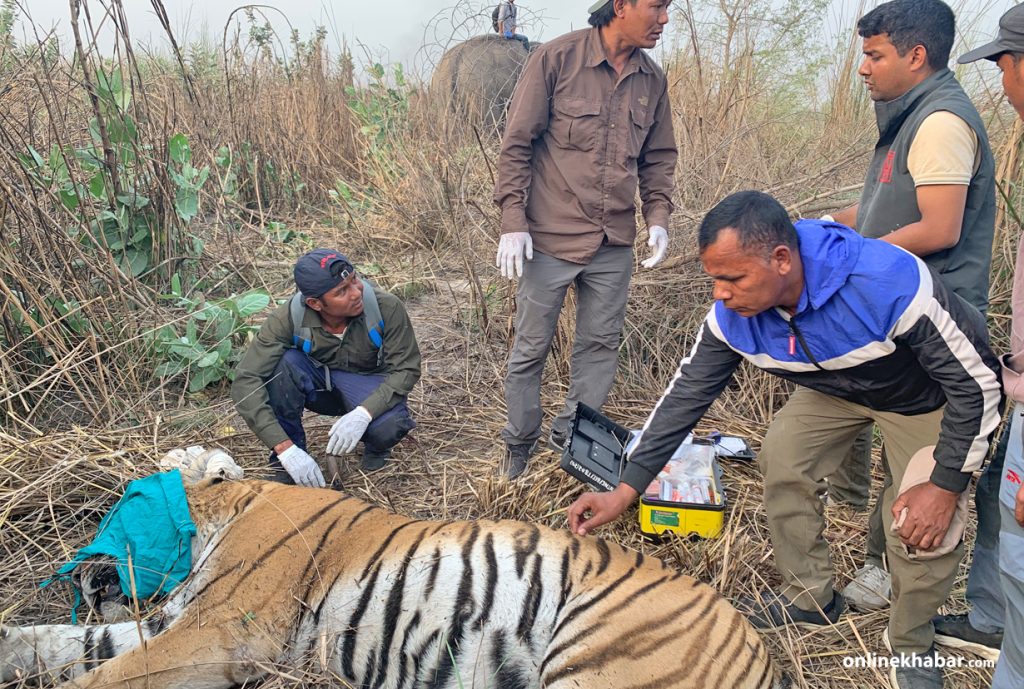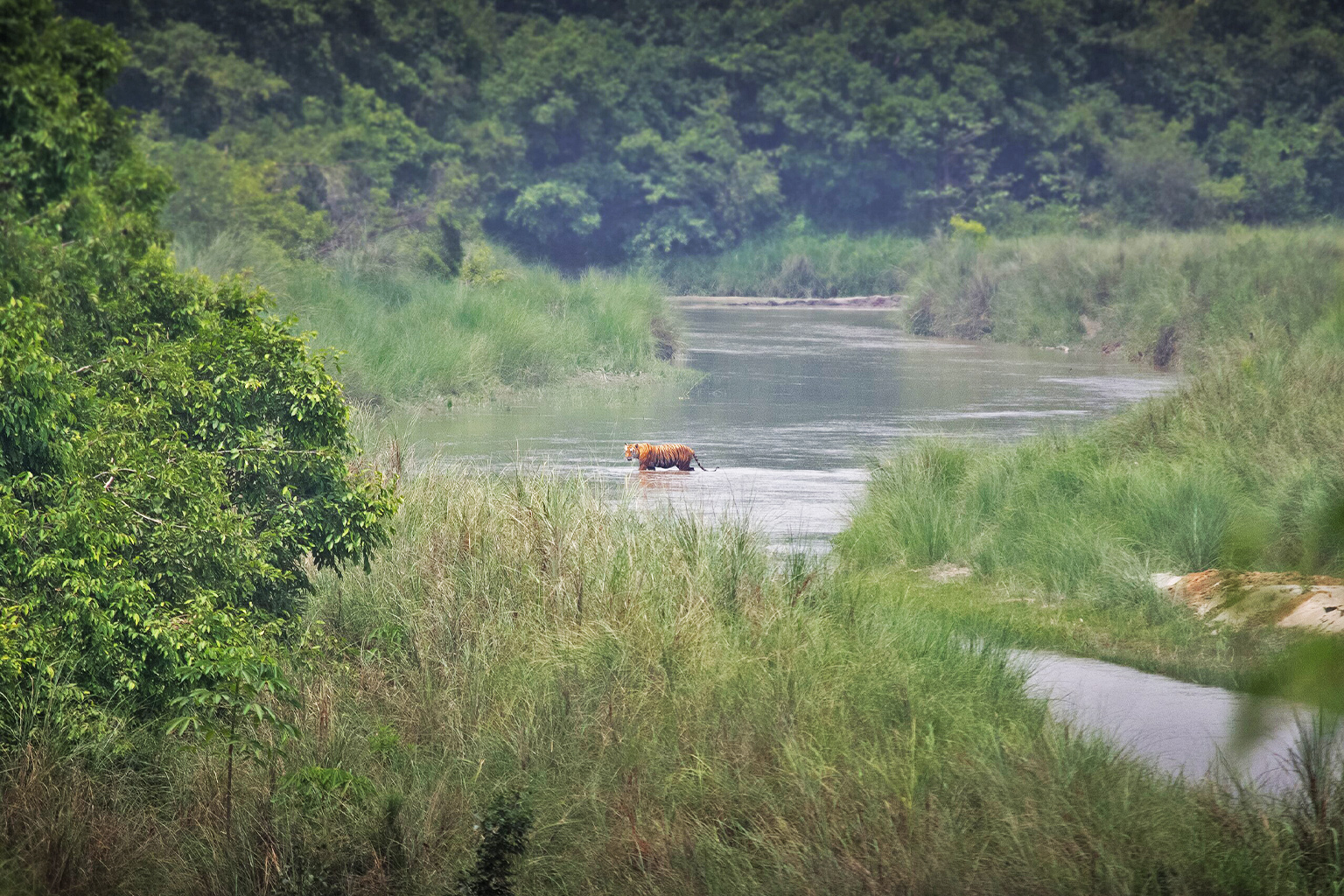
Nepal’s government remains undecided on how to manage tigers captured after attacking or killing humans, even as different stakeholders make varied suggestions on dealing with the urgent issue of these so-called ‘problem animals’.
The rising incidence of human-tiger conflict is a direct consequence of Nepal’s stunning success in conserving tigers, which has seen the population of the endangered big cat nearly triple since 2010. With that increase, the number of tigers that authorities have determined must be removed from their habitat for human safety has also gone up.
Today, there are 18 of these apex predators in captivity, stretching the capacity of the government to feed and accommodate them.
“The government hasn’t taken any new decision so far on how to manage the captive tigers,” said Bed Kumar Dhakal, a spokesperson for the Department of National Parks and Wildlife Conservation.
Last year, the country’s environment minister proposed, controversially, that sport hunters be allowed to kill “problem tigers,” thereby addressing human-tiger conflict while also generating revenue that can be invested back into conservation. Other government officials have called for gifting the animals to zoos abroad, while NGOs have lobbied for the establishment of rescue centres at the provincial level. Some academics have suggested simply shooting tigers deemed dangerous to human life.
“After a lot of backlash over the proposal to allow sport hunting of problem tigers, the minister hasn’t raised the proposal again,” a wildlife department official familiar with the development said, asking not to be named as they were not authorised to speak to the media. “But the minister continues to speak about human-tiger conflict whenever he gets the forum to do so.”
No money for tigers

At a recent event related to conservation, Forest Minister Birendra Mahato said that while local communities continue to suffer because of rising tiger numbers, they go overlooked by policymakers who do not ever have to deal with the problem and are more focused instead on conservation.
According to the Wildlife Department, which is a unit of the Environment Ministry, it costs around Rs 500,000 to Rs 700,000 to feed a tiger in captivity every year. At this rate, the environment ministry, which has an annual budget of around USD 125 million for all of its programs, would have to allocate nearly USD 100,000 just to feed and look after the 18 tigers currently in captivity.
The Tiger Action Conservation Action Plan (2023-2032) also identifies problem tigers as one of the challenges in tiger conservation. According to the document, 38 people died in tiger attacks in Nepal between 2019 and 2023, with most of the incidents taking place outside protected areas, in corridors connecting tiger habitats in Nepal and India.
“Managing an increasing number of problematic tigers remains a daunting task, both financially and technically, for protected area managers. Zoos and rescue centres are already overwhelmed with problematic tigers,” it says. The plan calls for the development of a comprehensive protocol to cope with the rescue, handling and rehabilitation of these tigers, but stops short of identifying concrete ways to manage them.
For their part, NGOs and their conservation partners say the government must invest in rescue centers and enclosures where the tigers can be looked after. However, none have committed any funding or provided any concrete proposals to that end, the wildlife department official said.
Giving tigers away

Another option the government is looking at is giving the animals to foreign zoos. However, neither the wildlife department nor the foreign ministry has actively pitched the idea to any foreign government. Historically, also, foreign zoos have preferred animals such as greater one-horned rhinos over tigers for such diplomatic gestures. According to wildlife department records, Nepal has gifted 26 rhinos to foreign governments and zoos since 1985. Only one tiger, a dead one at that, has ever been gifted to a foreign government: a pelt and a skull that Nepal sent to a Saudi prince in 1998.
Dhakal from the wildlife department said the government is working on guidelines for provincial governments to establish zoos where they can house tigers for educational purposes. The lack of such guidelines has often been cited as the reason animals continue to be held in inhumane conditions in so-called mini zoos across the country. With even the central zoo in Kathmandu having limited space and resources for animals such as tigers, critics say provincial zoos won’t have the capacity to manage problem tigers.
Meanwhile, at a recent grassland management discussion in Kathmandu, a wildlife manager from South Africa suggested that Nepal shouldn’t shy away from killing problem tigers. It’s something that wildlife practitioners don’t like doing, but that’s the most efficient way to manage problem tigers, he said. Shooting the tiger and burying it in an unmarked area gets rid of all the issues, he added. But the practice could be against Indigenous beliefs and principles of nonviolence, critics say.
“We hope that the government will soon decide which approach it wants to take,” Dhakal said.
This story first appeared on Mongabay and Onlinekhabar is republishing it under a Creative Commons licence.



















